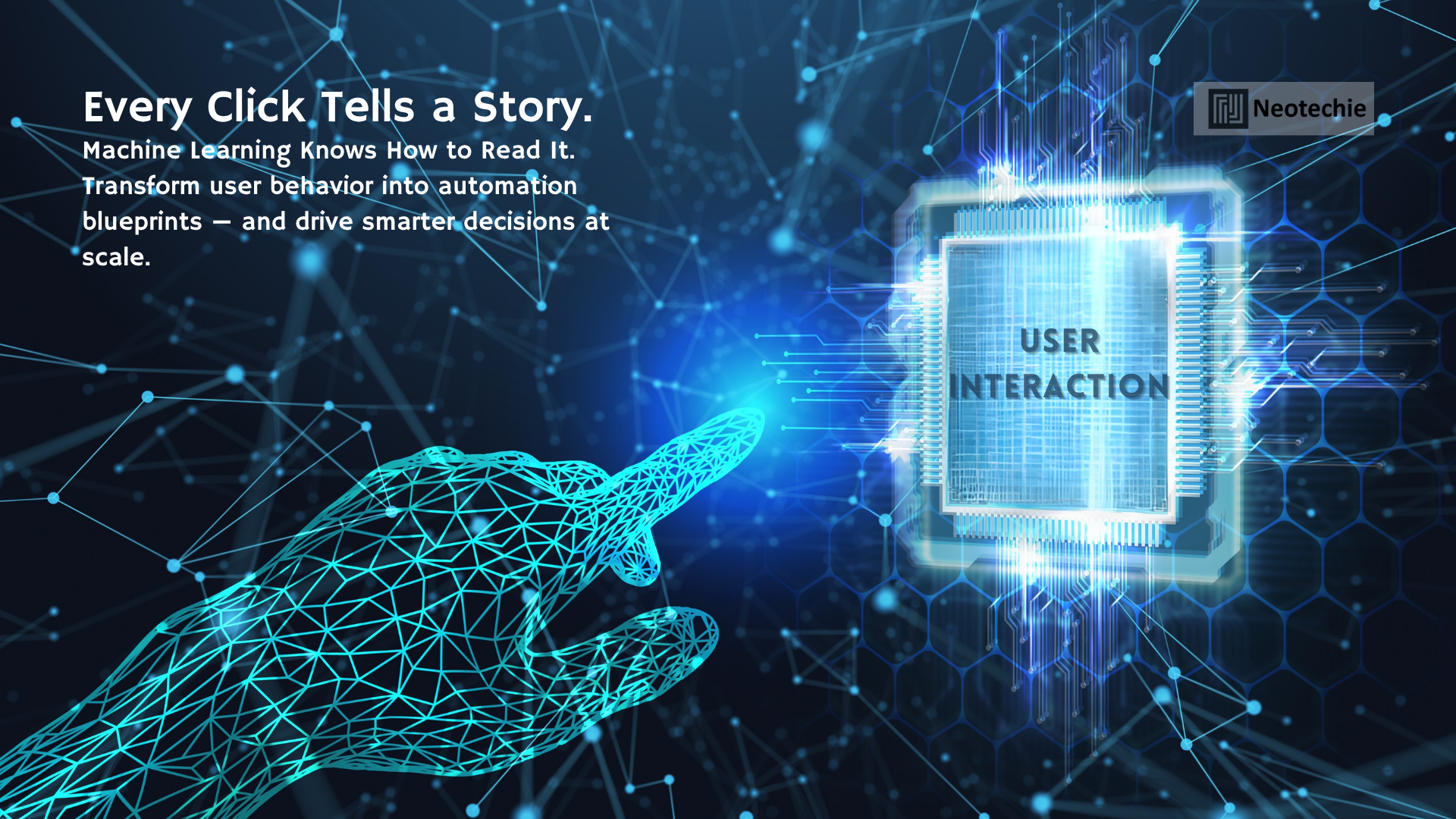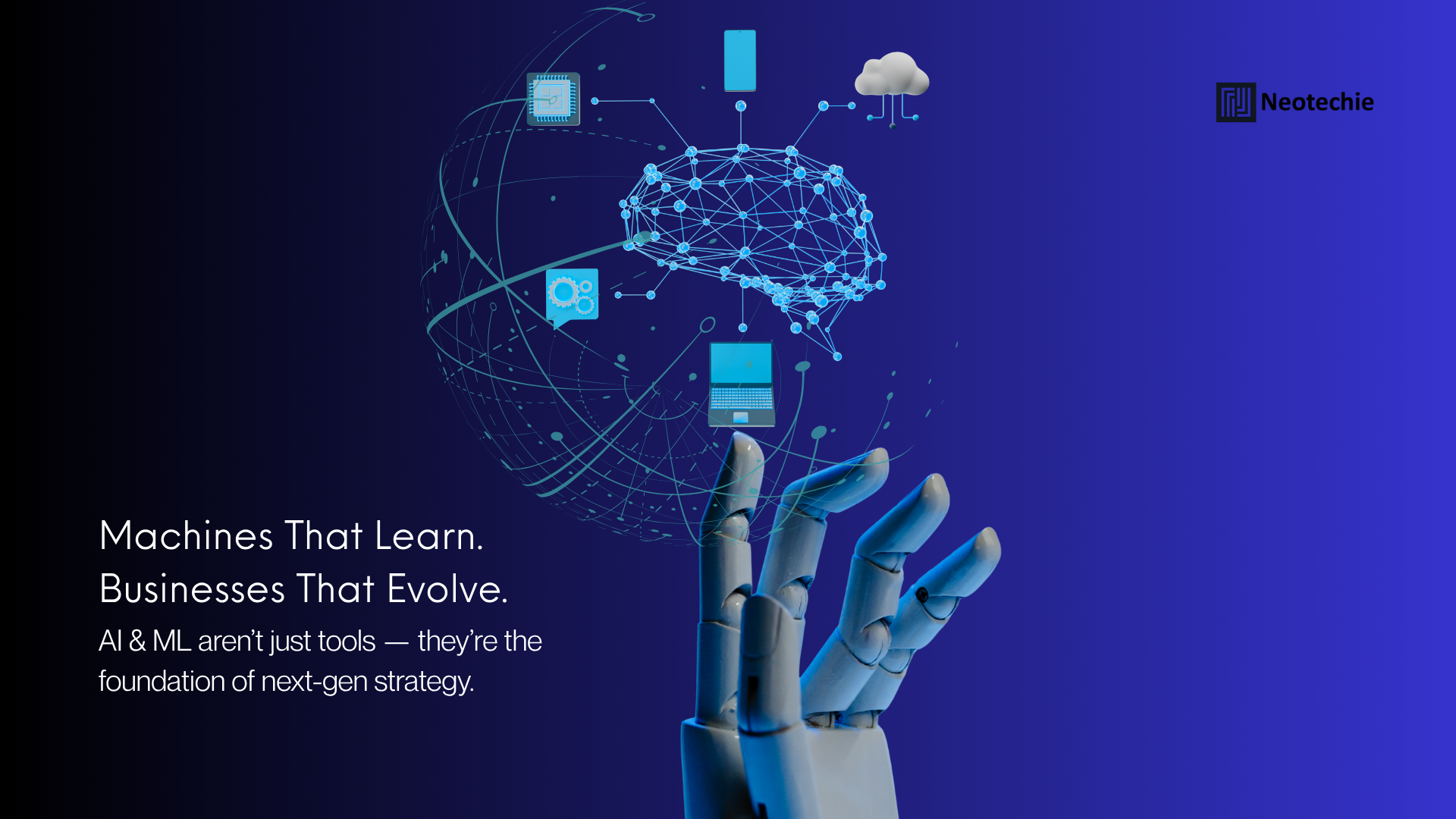Every workflow tells a story—but not all of them are easy to read. Your teams may be following countless steps across apps, tabs, and platforms that look fine on the surface but waste hours under the hood. While logs and reports show what happened, they rarely explain how or why. That’s where Machine Learning (ML) changes everything: by translating user behavior into data-driven, actionable insights for automation.
Understanding Interaction Data as a Goldmine
Every click, keystroke, scroll, and delay is a data signal that reveals how users interact with business systems in real-time. Traditional process discovery methods often ignore these granular behaviors, but they contain vital clues about:
- Navigation inefficiencies: Extra steps or loops to reach a goal.
- User confusion: Pauses or backtracking indicating a poor interface.
- Repetitive patterns: Manual tasks performed across systems.
- System design flaws: Screens or features that hinder flow.
By harnessing this behavioral layer with ML, businesses can detect where human time is wasted and where automation can add value.
From Behavior to Blueprint: The ML Process
1. Data Collection through Passive Monitoring
ML-based discovery tools gather user behavior without interrupting workflows. This includes:
- Mouse movement and click paths to understand how users navigate.
- Keystrokes and input patterns to evaluate form usage and manual effort.
- Screen and app switches that reveal tool fragmentation and context-switching.
- Wait times and idle phases, which help detect slow systems or user hesitation.
This data becomes the raw foundation for deeper analysis, giving insight into true operational behavior—not just reported tasks.
2. Feature Extraction & Labeling
ML algorithms then convert the raw interactions into structured, labeled data:
- Task frequency: How often a process repeats.
- Time metrics: Time taken per task or screen.
- Error frequency: Where users make corrections or redo steps.
- Interaction complexity: Number of steps required to complete a task.
Labeling this data enables smarter classification and prepares it for pattern analysis.
3. Pattern Recognition & Clustering
Machine Learning models identify similar behaviors and group them into clusters:
- High-volume repetitive tasks that are perfect for automation.
- User group differences, such as experienced users vs. new employees.
- Workflow inconsistencies across departments.
Clustering uncovers not just inefficiencies but where and why they happen, allowing for targeted intervention.
4. Insight Generation & Prioritization
The system doesn’t stop at detection—it ranks tasks and workflows based on:
- Impact potential: How much time and cost automation would save.
- Volume: How frequently a process occurs across users.
- Risk: Whether the task is prone to human error.
This provides a clear, data-backed automation roadmap that decision-makers can trust.
Why This Approach Outperforms Traditional Discovery
Manual discovery methods like interviews, flowcharts, and SOPs often fall short because:
- Users forget or omit steps during interviews.
- Actual behavior deviates from what’s documented.
- They fail to capture real-time friction or workarounds.
In contrast, ML-based discovery:
- Continuously monitors real activity without disruption.
- Uncovers hidden workflows and detours missed by humans.
- Adapts to process changes without requiring re-documentation.
This makes the approach smarter, faster, and vastly more accurate for real-world environments.
The Automation Triggers Hiding in Plain Sight
Machine Learning detects what we often overlook, such as:
- Task redundancy: Re-entering customer details across systems.
- Dead time: Users waiting for approvals or system responses.
- Low-skill repetition: Processes better handled by bots (e.g., copy-paste tasks).
- Workflow detours: Workarounds due to poor tool design.
Each of these indicators reveals a clear entry point for automation or redesign.
ML + Process Discovery = Automation Goldmine
1. Context-Aware Automation
ML learns the why behind a task. Instead of automating based on documentation alone, it adapts to:
- User-specific habits
- Environmental triggers
- Workflow variations across contexts
This leads to smarter automation bots that function well even in complex, variable environments.
2. User-Centric Optimization
Every role interacts with systems differently. ML helps:
- Map unique workflows per user or role.
- Identify training gaps based on navigation patterns.
- Prioritize automation for users experiencing the most friction.
This creates tailored solutions that serve real needs.
3. Process Stability Analysis
Over time, ML detects when a process is deteriorating:
- An increase in time-to-completion.
- Higher error rates.
- Rising use of workarounds.
These become alerts for process redesign, retraining, or further automation.
Real-World Scenario (Hypothetical)
A human resources department was facing onboarding delays for new hires. ML-based process discovery uncovered:
- Multiple redundant data entries into different portals.
- Login issues that required IT intervention.
- Manually written status emails consuming hours every week.
Automation bots were introduced to handle data transfer, validate credentials, and send automated updates. The result was:
- 50% reduction in onboarding time
- Lower support requests to IT
- Higher consistency and accuracy in communication
Common Challenges (And Their Solutions)
1. Data Privacy Concerns
- Solution: Use anonymized tracking and obtain transparent user consent to maintain compliance with regulations.
2. Misinterpreting Patterns
- Solution: Pair ML outputs with human reviews to ensure context is respected and decisions are accurate.
3. Resistance to Automation
- Solution: Show employees how automation enhances their productivity and reduces their workload, not their value.
Industries Where Interaction-Based Automation Discovery Shines
ML-powered behavior discovery drives efficiency across sectors:
- Banking: Speeding up document checks, data validation, and approvals.
- Healthcare: Reducing manual entry errors and processing claims faster.
- Retail: Automating vendor updates and back-office operations.
- Customer Service: Detecting optimal response workflows and automating repetitive inquiries.
- Logistics: Improving routing, shipment tracking, and status updates.
Each of these industries benefits from ML’s ability to learn, adapt, and optimize in real time.
Why This Approach Is Future-Proof
Unlike static documentation or flowcharts that age quickly, ML-based discovery is:
- Continuously learning from new behavior.
- Platform-agnostic, working across legacy and modern systems.
- Responsive to change, flagging new patterns as they emerge.
This means your automation strategy evolves with your operations—never outdated, always relevant.
Neotechie’s ML-Powered Clarity: Discover Automation from Behavior
At Neotechie, we turn everyday user interactions into actionable insights using Advanced Machine Learning. Our Process Discovery service captures how your teams actually work—across screens, systems, and tools—and detects the repetitive, inefficient, and automatable steps you may not even realize exist.
By transforming behavioral data into a prioritized automation strategy, we help you simplify complexity, speed up workflows, and unleash new efficiency.
Explore our full offering under the AI & ML services at Neotechie.in.


